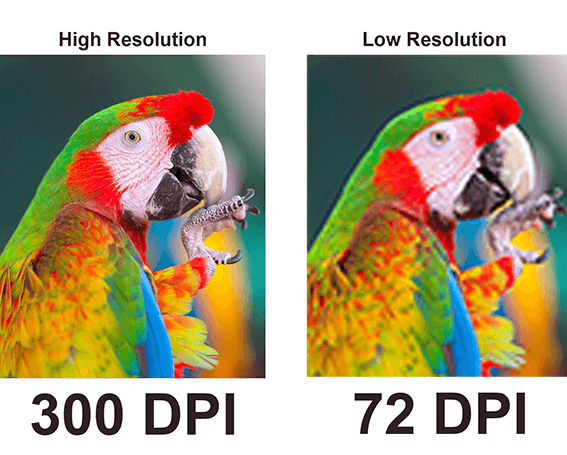Table of Contents
Regarding digital images, DPI (dots per inch) is a crucial factor that can significantly impact the quality of your prints and digital displays. Understanding DPI and how it relates to image resolution is essential for anyone involved in graphic design, photography, or digital art. In this article, we’ll explore what DPI is, why it matters, and how you can ensure your images are optimized for the best possible results. So, let’s dive into the world of DPI and uncover what you need to know!
DPI: The Fundamental of Image Clarity
When it comes to the clarity of digital images, understanding DPI is crucial. DPI, or dots per inch, determines the resolution and quality of an image. The higher the DPI, the more precise and detailed the image. Here are a few key points to consider:
- Resolution:
Remember, a higher DPI isn’t just about numbers. It’s about the resolution and quality of your images. A higher DPI means sharper, more detailed images that are visually appealing and professional-looking.
- Print Quality:
A minimum DPI of 300 is recommended for printed materials to ensure high-quality output.
- Viewing Distance:
The ideal DPI for digital displays can vary based on the distance from which the images will be viewed.
Understanding DPI is essential for achieving optimal image clarity and quality in both digital and printed formats.

The Role of DPI in Digital Imaging and Printing Technology
DPI, or dots per inch, is crucial in digital imaging and printing technology. It refers to measuring the resolution of an image or printed material, indicating how many dots of ink or pigment are present in each linear inch. This measurement directly affects the sharpness and quality of the final output, with higher DPI values resulting in more precise and detailed images. In digital imaging, DPI determines the quality of a digital photograph or scanned image, while printing technology influences the precision and clarity of printed materials.
When it comes to digital imaging, the higher the DPI, the better the overall quality of the image. Images with higher DPI values have more detail, sharper lines, and smoother color transitions, making them ideal for high-quality prints and digital displays. On the other hand, images with lower DPI values may appear pixelated, blurred, or lacking in detail, making them unsuitable for professional use. As a result, understanding and utilizing DPI is essential for photographers, designers, and anyone working with digital images, as it directly impacts their work’s visual appeal and effectiveness.
The Importance of DPI in Printing Technology
In printing technology, the role of DPI is equally significant. The DPI of a print determines its resolution and quality, with higher DPI values allowing for more detailed, sharp, and lifelike prints. This is particularly important in professional settings, such as commercial printing, advertising, and graphic design, where the quality of printed materials directly reflects the professionalism and credibility of the brand or business. Additionally, understanding the relationship between DPI and printing technology is crucial for determining the appropriate settings for different printing requirements, whether a large-scale banner, a fine art print, or a brochure.
| Application | Recommended DPI |
|---|---|
| Professional Photography Prints | 300 DPI or higher |
| Brochures and Marketing Materials | 150-300 DPI |
| Large-scale Banners and Posters | 100 DPI or lower |
DPI plays a critical role in digital imaging and printing technology. Understanding its impact and optimizing DPI settings for different applications is essential for achieving the best possible results in photography, design, and print production.
Deciphering DPI: How It Affects Your Digital Media
Understanding DPI, or dots per inch, is crucial in digital media. DPI refers to the resolution of an image or a printed document, and it significantly impacts the quality of the final product. Clarity, precision, and detail are essential when creating digital media, and DPI plays a crucial role in achieving these elements. Knowing how DPI affects your digital media is vital for producing high-quality visuals, whether you are working on graphic design, photography, or printing.
Navigating the World of DPI: From Creation to Output
Understanding DPI, or dots per inch, is crucial in digital imaging. DPI refers to the number of dots placed in a line within one inch. It affects the quality and clarity of an image, whether it’s on-screen or in print.
Creating DPI:
When creating digital images, it’s essential to consider the desired output, whether for web use or print. Resolution and pixel dimensions are crucial in determining the DPI for each project.
Outputting DPI:
When preparing an image for print, it’s essential to ensure that the DPI is set to the appropriate level, typically 300 DPI for high-quality images. On the other hand, a lower DPI may be acceptable for web use to reduce file size and optimize loading speed.
| Output | Recommended DPI |
|---|---|
| 300 DPI | |
| Web | 72 DPI |
DPI is fundamental to ensuring the best quality for digital images, whether for online use or print. By considering the intended output and adjusting the DPI accordingly, you can optimize the visual impact of your images.
Maximizing Visual Fidelity: The Importance of DPI Settings in Digital Devices
DPI settings play a crucial role in experiencing the highest-quality visuals on your digital devices. DPI, or dots per inch, determines the resolution and clarity of images and text on screens. By adjusting the DPI settings, users can maximize the visual fidelity of their devices, ensuring a crisp and clear display. Whether it’s a smartphone, tablet, or computer monitor, understanding and optimizing DPI settings is essential for a visually stunning digital experience.


